The Groundnut Scheme: A colonial failure
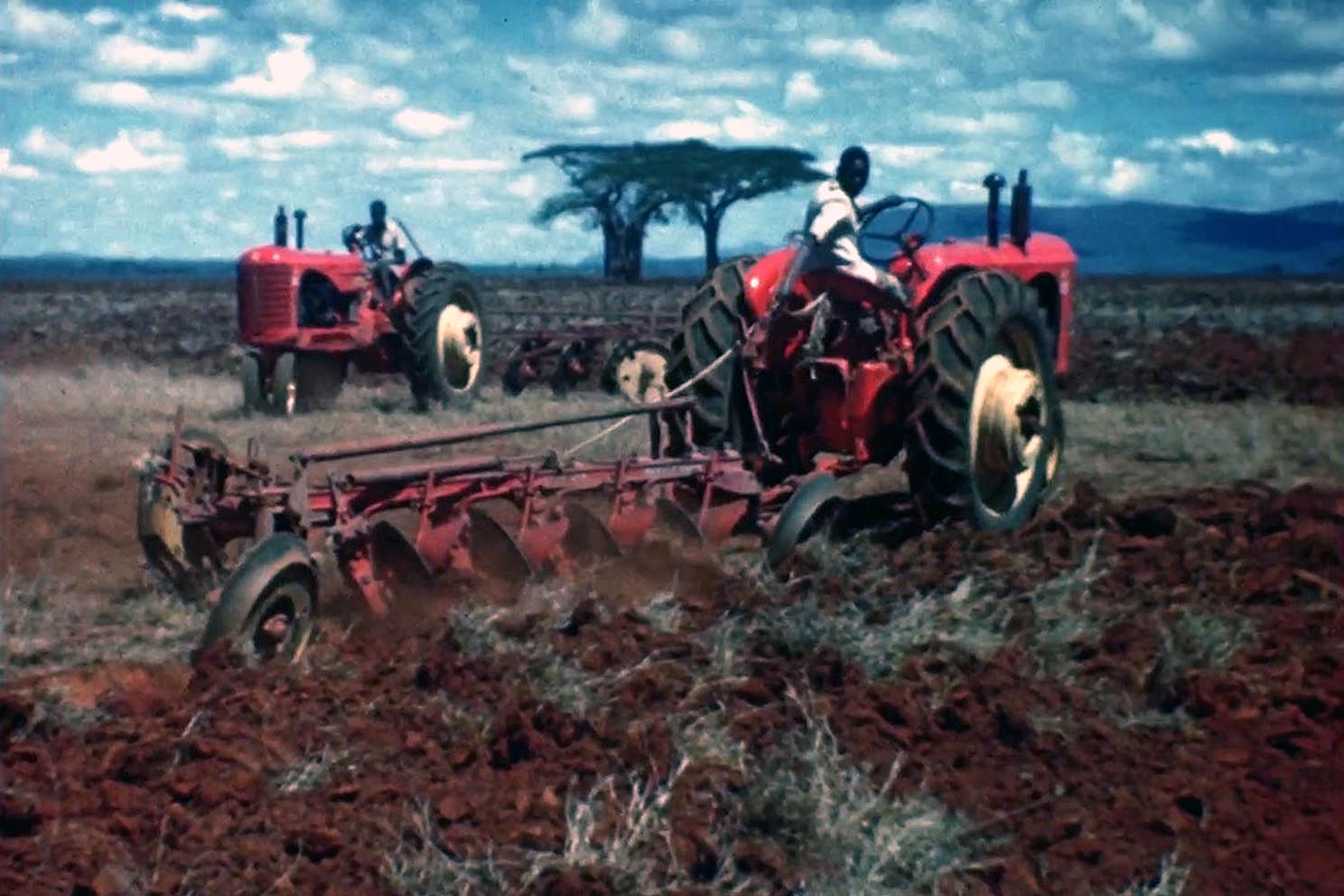
The ill-fated Tanganyika Groundnut Scheme was planned and put into practice in the mid-twentieth century, coming to an abrupt end in 1951. The story of its collapse is a powerful example of why top-down, colonial approaches to agricultural development often struggled to produce the desired results. It raises important questions about why the voices of local agricultural workers and communities were often ignored, and how this contributed to the Scheme’s demise. This online exhibition has been devised to make sense of scattered holdings throughout The MERL collection. Together these groundnut and East Africa-related farming resources can help shed light on this infamous project and its failings.
Image: Still taken from 1948 film entitled ‘The Groundnut Scheme at Kongwa’, showing unnamed workers driving tractors and ploughing virgin soil with disc ploughs (MERL TR17 RAN/PH6/49)
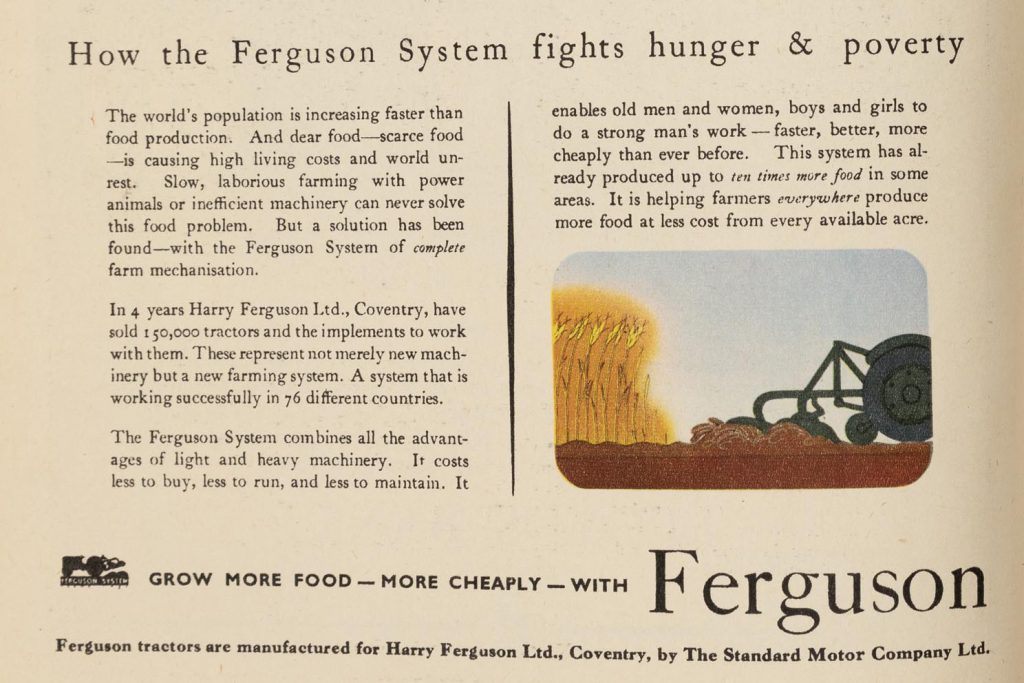
Post-war food security
Following the Second World War, the British Empire was at its largest size and included the United Nations Trust territory of Tanganyika (now Tanzania). This was home to around 6 million Africans and 16,000 Europeans. Large-scale agricultural projects were often seen as a remedy to the problem of food supply, and Britain was eager to exploit its African colonies for this purpose. The immediate food shortage following the war saw the Labour government implement the Groundnut Scheme to alleviate a shortage of fats, to produce required oilseeds, and to contribute to both the African and British economies.
Image: Detail showing text about mechanisation and the fight against global hunger, as used in a tractor advertisement published in the 1951 Festival of Britain Guide (MERL LIBRARY 1770-COX)

Political drive
Growing groundnuts in Tanganyika was a policy administered by the Overseas Food Corporation in 1947. It was commissioned after a survey which was completed in only seven weeks, and sought to mechanise 300,000 acres of marginal land. Inadequate data and failure to arrange a pilot scheme, combined with massive underestimation of required infrastructure and insufficient analysis of the soil, resulted in the failure of these plans. It was described in 1953 as ‘the worst fiasco in recent British colonial history’.
Image: Still taken from 1948 film entitled ‘The Groundnut Scheme at Kongwa’, showing a large disc plough and Europeans in colonial-style dress observing work in Tanganyika (MERL TR17 RAN/PH6/49)

Growing potential
The viability of the Groundnut Scheme was founded via private enterprise for potential groundnut farming on Tanganyika soil. One of the key players in the decision to invest into Tanganyika agriculture was Frank Samuel, managing director of the United Africa Company. Samuel was impressed by the potential for oil production in Tanganyika. He approached Tanganika’s Director of Agriculture to inquire about the feasibility of investing in a plantation of oil-producing plants. However, Tanganyika’s Government did not have the capital to facilitate the investment. Samuel proposed the Scheme to the British Government who green-lighted the project as it answered their balance of payments deficit.
Image: Still taken from 1948 film entitled ‘The Groundnut Scheme at Kongwa’, showing an array of costly agricultural equipment on site in Tanganyika (MERL TR17 RAN/PH6/49)
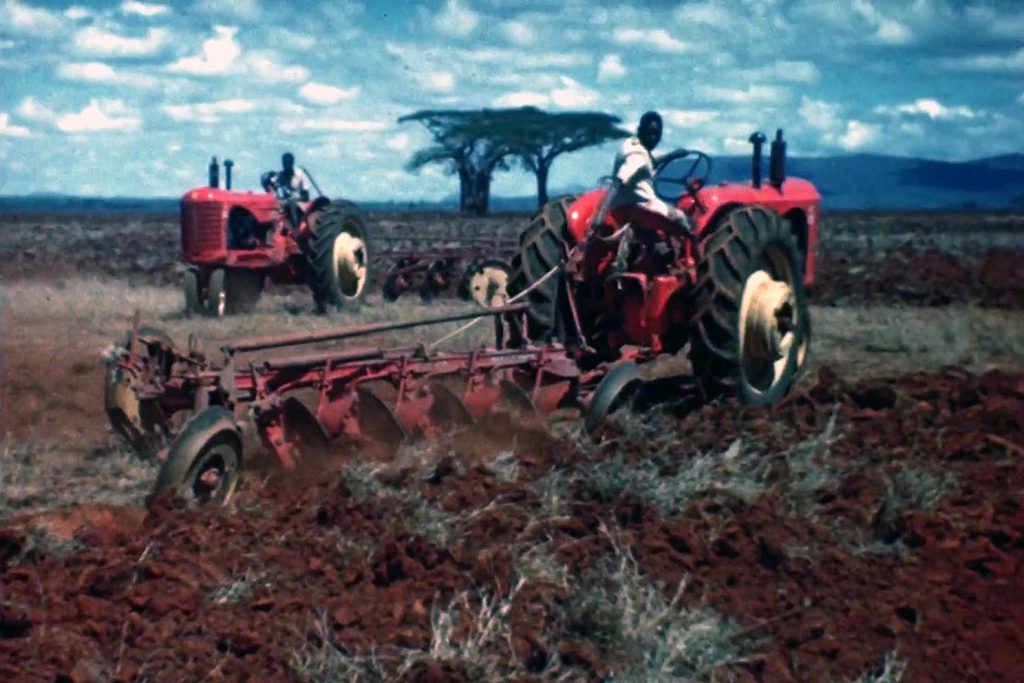
False pretenses and problems
Through the entirety of the Groundnut Scheme 30,000 Africans gained employment with high wages. Consequently, the Scheme allowed enterprise to thrive and workers would save wages to invest in their own businesses. However, it has been suggested that wealth accumulated by some of the Scheme’s workers led to negative consequences including theft, prostitution, and other social problems.
Yet the main reason that the Scheme failed was that there was no pilot test to investigate the feasibility of the project. If the project had preliminary testing, the problems that caused the Scheme to fail would have been overcome or, perhaps more crucially, the Scheme might have not been attempted in the first place. For example, in Kongwa district, only once between 1947 and 1951 was there sufficient annual rainfall to sustain a groundnut crop.
Image: Still taken from 1948 film entitled ‘The Groundnut Scheme at Kongwa’, showing unnamed workers driving tractors and ploughing virgin soil with disc ploughs (MERL TR17 RAN/PH6/49)
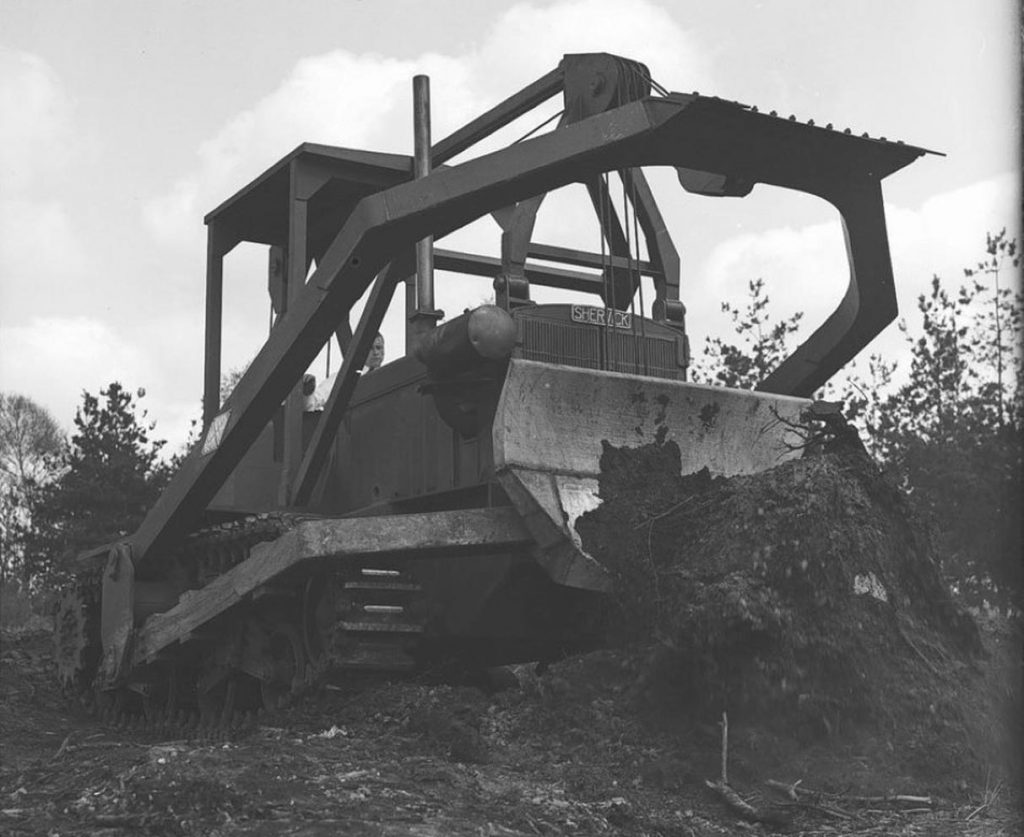
The drawbacks of mechanisation
The Scheme’s total reliance on mechanical solutions backfired and led to enormous cost for little gain. For example, land clearing at Kongwa was extremely inefficient. They attempted to use heavy crawler tractors with bulldozer blades to remove dense bush, which resulted in a great deal of reversing and a number of the tractors becoming entangled in the cleared vegetation.
The use of converted Sherman tanks or “Shervicks” was offered as alternative. However, these struggled with a lack of power; four were required to pull over most trees, and so were very costly.
Image: A “Shervick” in use. Photographed by Charles Topham in 1948. (P FW PH1/OS/44/459)

The Colonial Office and John Higgs
In 1950, the Colonial Office published the ‘Report of a survey of problems in the mechanization of native agriculture in tropical Africa’, which touched upon Tanganyika. A lecturer in agricultural machinery at the University of Reading, John Higgs, was one of the writers of this report. Just a few years later, Higgs helped to establish The MERL and would serve as its first Keeper (Curator). From the perspective of decolonisation, the report he co-authored is littered with perceived superiority.
Image: Detail from a journal article written by John Higgs on ‘African Development’ following his fieldwork preparing the Colonial Office report, as published in the journal Farm Mechanization, 1949.
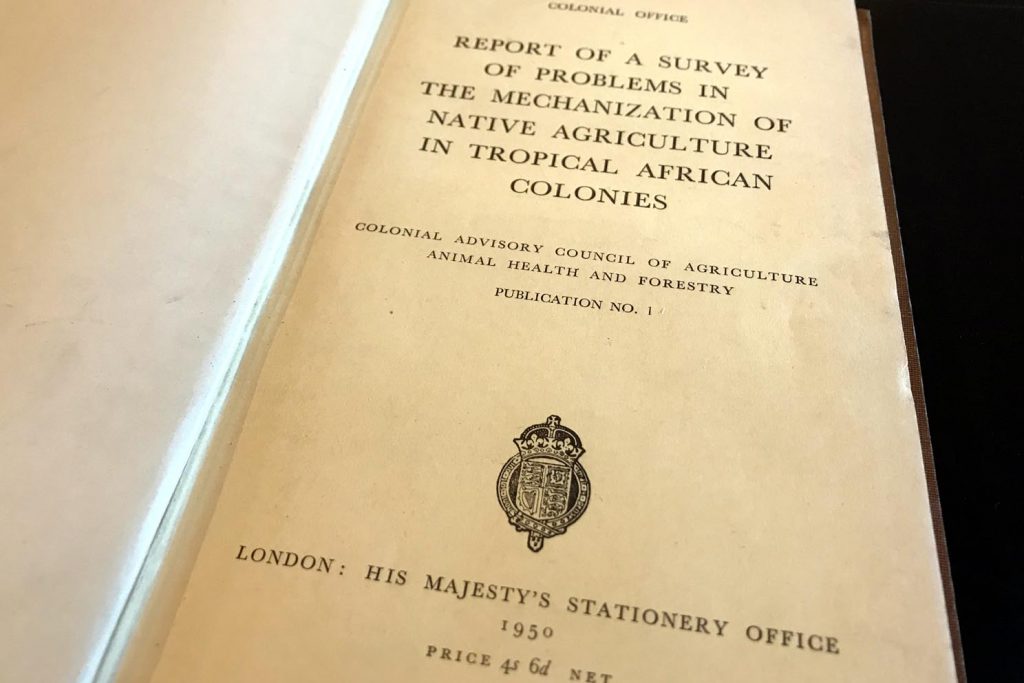
No local voice
Colonial reports about agriculture practice in this period give the impression that the indigenous people living in colonised Tanganyika – the ‘natives’ – were underdeveloped when it came to agriculture.
Texts implied that the British colonial officers were ‘blessing’ local communities with advanced agricultural technology and knowledge. The Colonial Office report of 1950 failed to explore the voice or story of the African locals, or the ways in which their agricultural traditions were being overhauled by their colonisers.
However, the failure to incorporate local knowledge and skills was a key element in the Scheme’s collapse. For example, in the Southern Province, the clay content of the soil was over 20%, which baked hard in the sun and was impossible to move. Once the Scheme was cancelled, the land was utilised by the locals to successfully ranch cattle.
Image: Title page of Colonial Office report on the ‘Mechanization Of Native Agriculture’, written by John Higgs, R. K. Kerkham, and John Raeburn, and published in 1950 (MERL Library 2280-COL)

Acknowledgements and resources
This exhibition was compiled in partnership with undergraduate History students from the University of Reading, including Charles Clemens, Rebekah Fry, Katie Crook, Jakob Longden, and others. We are also grateful for the support of Atenchong Talleh Nkobou from the School of Agriculture, Policy, and Development who provided support and expertise, and to Tim Jerrome and Dr Ollie Douglas for editorial and technical input.
The exhibition was produced as part of a public history placement and was developed with support from Professor Kate Williams and Dr Dafydd Townley from the Department of History. The students were tasked with using items from The MERL collection to research an aspect of British colonial history and to produce interpretation considerate of the perspectives of colonised peoples. Providing access to resources proved difficult due to the pandemic but the finished exhibition provides a successful overview, in spite of these challenging circumstances.
With thanks to all involved for their efforts.